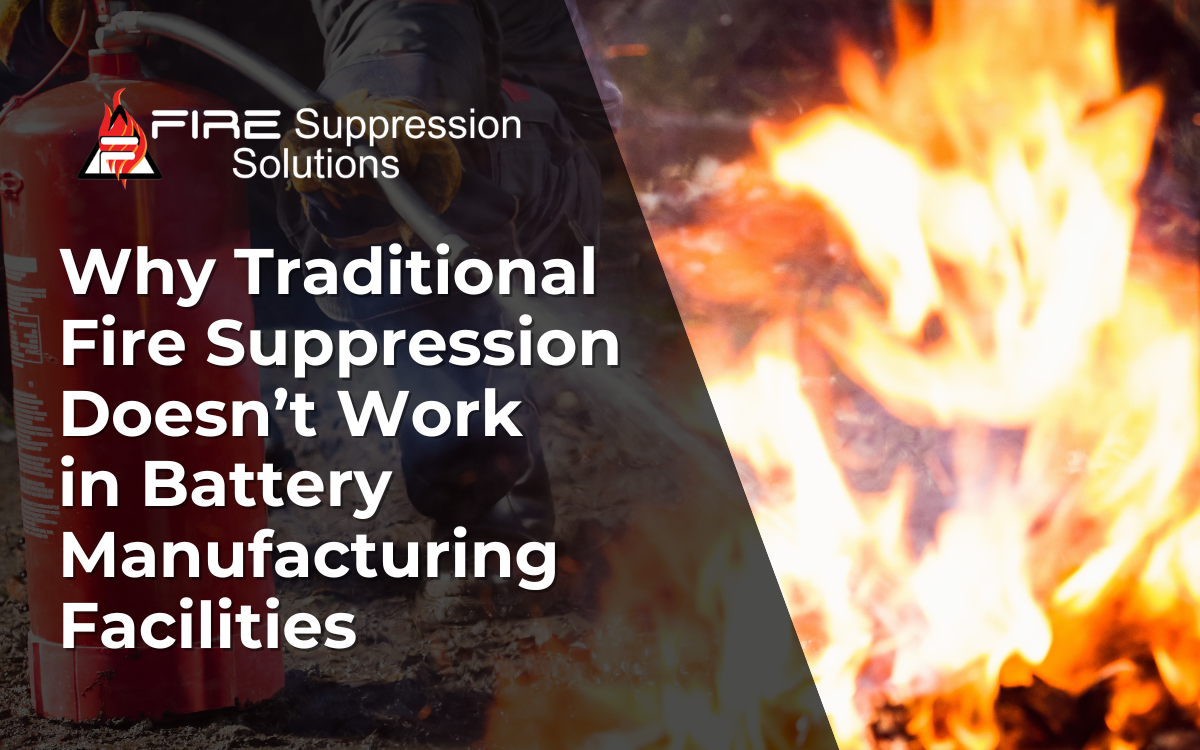Battery manufacturing facilities are mission-critical environments with highly flammable materials, expensive equipment, and a constant risk of thermal runaway. But despite the growing fire risk from lithium-ion batteries, many facilities still rely on outdated suppression methods—methods that weren’t designed to combat the fires of a modern, electrified world.
Here’s why traditional fire suppression systems don’t work, and what your facility can do instead to mitigate risk.
The Unique Challenge of Lithium-Ion Battery Fires
Fires caused by lithium-ion batteries don’t behave like ordinary fires. Once a cell enters thermal runaway, it releases toxic gases, can explode, and reignite even after it appears extinguished. These events are often triggered by internal defects, overcharging, or physical damage—and can spread rapidly from one cell to the next.
Key challenges include:
- Extremely high temperatures (over 1,000°F)
- Sudden explosions or shrapnel from ruptured cells
- Reignition hours or even days after initial suppression
- Toxic and flammable gas release, including hydrogen fluoride
Traditional systems, like dry chemical extinguishers or overhead sprinklers, simply weren’t designed to stop this type of chemical chain reaction. In fact, they often make things worse.
Why Water and Dry Chemical Systems Can Be Dangerous
Water-based suppression systems may cool surfaces, but they cannot penetrate a sealed lithium-ion cell. Worse, water can react dangerously with the chemicals released during thermal runaway—creating steam, corrosive gases, or even electrical short circuits if not handled carefully.
Dry chemical agents like ABC powder can suppress visible flames, but they don’t address the heat-generating chemical reaction still happening inside the battery. That means the fire might reignite once temperatures rise again. And while halon alternatives have their place in clean environments, many are not rated for lithium-ion fires and carry their own toxicity and environmental concerns.
You Need a Suppression Strategy That Matches the Risk
Modern fire suppression for battery manufacturing facilities must meet a higher standard:
- Stop the chemical reaction behind thermal runaway
- Prevent reignition
- Minimize damage to sensitive equipment
- Support fast deployment by non-specialist personnel
That’s why industry-leading facilities are turning to clean-agent suppression solutions like TRF+, a proprietary, field-tested fluid recognized by UL as an effective component for extinguishing lithium-ion battery fires. Available in portable extinguishers, bulk fluid containers, and fully stocked emergency response kits, TRF+ is already in use in recycling plants, automotive facilities, and storage centers nationwide.
Protecting High-Risk Areas in Your Facility
To build a safer facility, start by assessing your highest-risk zones:
- Battery assembly or testing areas
- Charging and storage stations
- Waste bins and recycling stations
- Automated conveyor lines with embedded battery packs
Then, consider staged suppression options:
- Emergency Response Kit (ERK) for fully contained thermal runaway response
- TRF+ Extinguishers for rapid spot suppression by staff
- 5- to 250-gallon TRF+ fluid supplies for training and facility-wide readiness
Whether you’re equipping a single workstation or a full plant floor, scalable protection is possible.
Take the Next Step Toward Facility Readiness
Outdated fire suppression systems put your business, your people, and your reputation at risk. With the increasing presence of lithium-ion batteries in manufacturing, the time to upgrade is now.
Want help building a lithium-ion fire readiness plan? Schedule a call with our team to learn how TRF+ solutions can be integrated into your current fire protection strategy.

